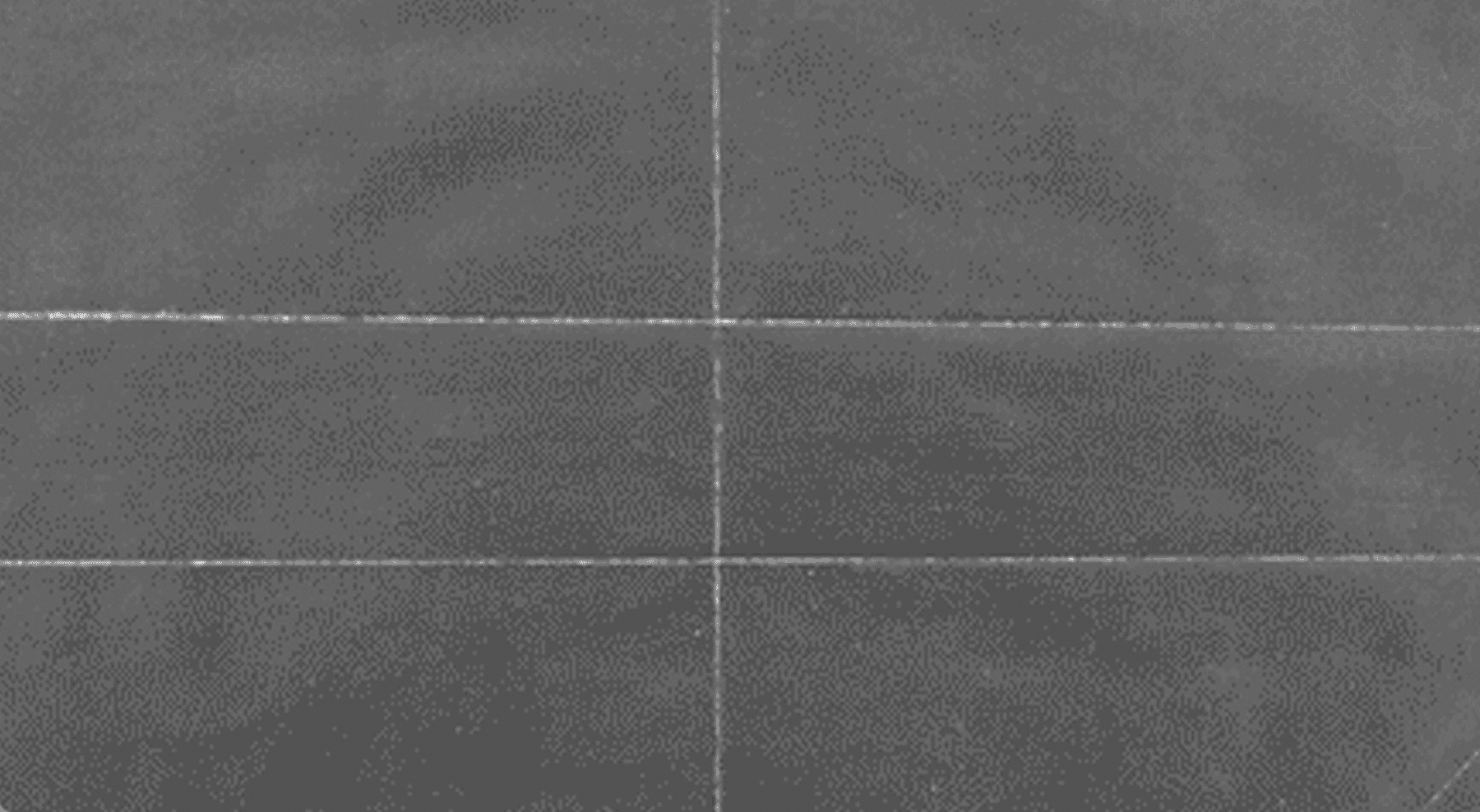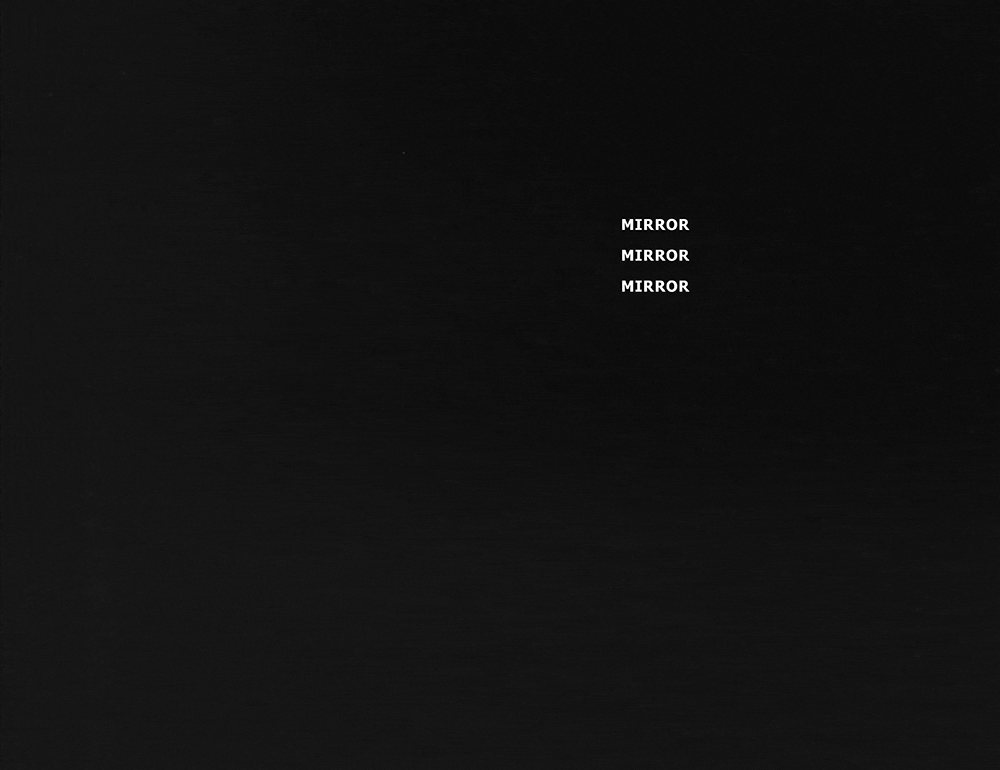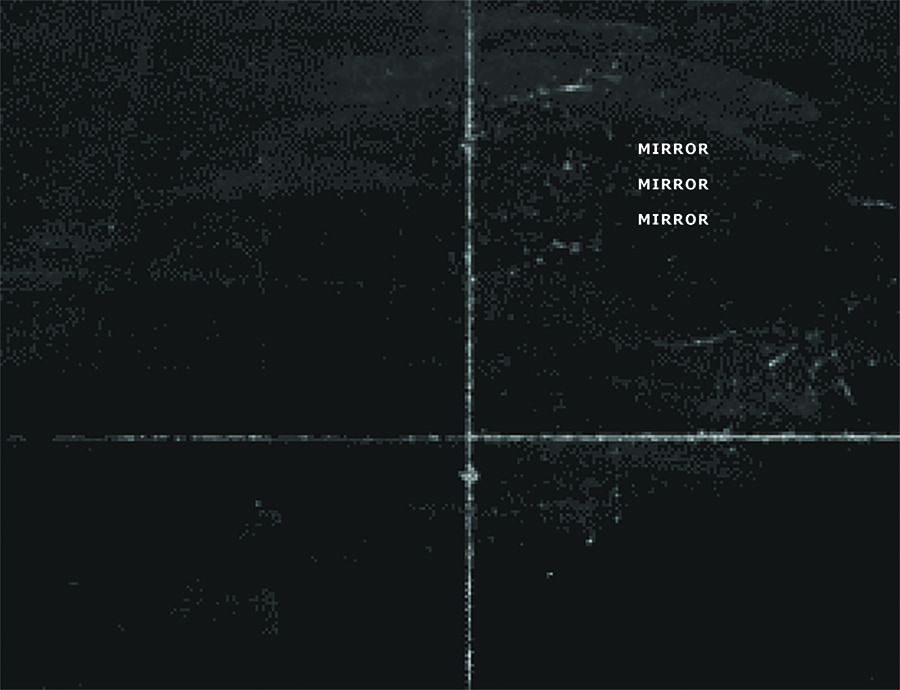Herman’s talent for intertwining seemingly incongruous forms and his longstanding investigations into what he calls the “language of reproduction” is on full display in his artist book, Western Style which draws from methods in art, science, advertising, philosophy, and gender studies to argue in text and image for the role of color in the ascent of both Judeo-Christian theology and capitalism. In particular, Herman uses the fetish of color— continually redefined through printing technologies—to connect the history of CYMK color separation processes and later RGB to what he identifies as a “spectral lust for cosmic origin.” “And this lust, far from receding in our increasingly secular and virtual world,” writes Herman “has morphed to become the central focus of our lives, a new hyper cult that worships the shifting gradients as readily as our ancestors pondered the moon and stars.” 2

Herman’s second series of works presented on Art Journal Open expands on his interest in the structure and science of visual narrative by again collapsing methods of reproduction, editing, and layering to underscore questions of legibility and the medium’s role in mirroring the viewer. These ideas, explored in series such as Phantasms (2008–2012) and Ecstasies (2010–2015) (above) highlight the material frailty and subjective qualities of seemingly standardized machines and processes such as ink jet printers and laser printing. This interest in the technical method of framing an idea can be compared to organizational markers endemic to books such as chapter headings or titles. In Herman’s estimation printing then becomes inherently linked to notions of circulation and ultimately with the broader theme of frame rate as a narrative tool. In Herman’s artworks, these modes or methods of conveying information are directly connected to the body and perceptual experience. Both the technical and perceptual effects of GIFs (graphics interchange format) so familiar to contemporary audiences, for example, become the focus of attention within Herman’s most recent project for Art Journal Open, which points to the ways that GIFs are constructed using multiple layers, similar to early frame animation. For Herman, the GIF has become a ubiquitous and highly charged digital mirror reflecting a seemingly endless reedit or restaging of the viewer vis-a-vis its cultural subjects. Herman’s project is to suggest that what connects the hypnotic staccato of a GIF to earlier photography and even lacquer is its underlying structure consisting of layers, and the way these myriad parts remains forever unstable and “in development.” Herman has used Art Journal Open to exploit the basic encoded hyperlink of the blog format function to allow one project to slip into another. In this way, the original promise of publishing and distribution as constituting a network is seen repeated in the logic of the internet as visualized in photo-collage and bookmaking. Herman seems to enjoy the play intrinsic to this open process, as suggested by the promise of a shared “download” consisting of a hidden frame from the preceding GIF—itself easily downloadable as separate images. In this way, the instability of both the image and its proper order in a digital narrative is brought to the forefront, made plain by Herman’s sly use of the CCTV flickering intermittently in the background, as if to confirm the closed circuit of production and reception.
Ultimately, rather than using ink jet printers to make ersatz paintings or isolate technical glitches as abstractions, Herman’s contribution to Art Journal Open can be read as a conceptual net subjecting forms of digital culture to closer and closer inspection, and in the process revealing new insights into conventions of authorship, mastery, and stability.
–Gloria Sutton, Former Web Editor

My interest in television and radio static, and what is often understood as “noise,” has inspired at least half a dozen unique but related publishing projects. I am particularly interested in rastering, a process by which images are scanned into discrete sections for purposes of transmission or storage. I talk about this at length in my video contribution to Art Journal Open from earlier this year, Edges of Action. The term “raster” comes from the Latin word for rake, which makes sense when you see the way I use cut and folded strips of paper and tiling to construct my images. What underlies my interest is the way the mechanisms and materials of transmission impact the communication itself. In this way, image making is akin to a scientific method, charting its manufacture. I am also deeply interested in process as a way of highlighting the innate meaning of a thing: for example how frame animation, like in the above GIF, reveals its constituent parts down to the most basic array of bits.

This interest in the structure/medium of communication is something I explored in my publication, Lost Angeles (2017). It consists of a simple narrative: the first image in the book depicts me with a small, portable TV walking around Los Angeles. I recorded the bad reception as I walked and then reprinted one second of that recording. The book ends with another image of me, this time close up, my face illuminated by the glow. The thirty individual images represent one second of television broadcast (one second is thirty frames), an organizing principle that I used previously in another book project Marfa Static (2013). In Lost Angeles each frame has been folded in what is known as a “Turkish fold” a pop-up fold often used for pocket maps. Using the portable TV as a recorder frames my thesis that the ubiquity of static represents a kind of collective body, surrounding us and linking people, but also vulnerable to interference. This metaphysic speaks directly to my idea that the body functions as an antenna.
My interest in antennas inspired another publishing project, Exstatica (2015), part of an ongoing series exploring the way technology and location frames connectivity. The essay Exstatica looks at how static, electromagnetic noise, signal interruption, and cosmic background radiation can all be seen as a social mirror reflecting class as well as the tension inherent in collective consciousness verses cultural homogenization. This raises analogous questions concerning the role and medium of contemporary ritual and the role of technology in the visualization and distribution of identity. While television antennas are found all over the world, today they are mostly outdated vestigial objects that do nothing but allude to a past era of broadcasting. In their mute sculptural remainder, I see something poetic and idealistic, but for those on the margins, an antenna still remains a lifeline. The images in Exstatica depict antennas in Mexico City, a place that has already switched to digital broadcasting.
Nick Herman, Listening / Escuchando (Or I’m Just Looking for the Wolf), 2017, Cyanotype print, from a series of ten photographs documenting the artist walking around Los Angeles carrying a modified Yagi antenna, 4.5 x 6.5 inches (artwork © Nick Herman)There is a fascinating history of radio transmission being used to circumvent borders, ranging from Voice of America to so-called Border Blasters, which were powerful transmission towers erected in Mexico just south of the border to circumvent American laws. These renegade broadcasts functioned as a palimpsest of mid-century America promoting evangelicalism, dubious and illegal medical claims, and social insurrection. The idea of a transmission tower being used to evangelize or expose some “truth” illustrates a tension between science and religion (and populism) that lies at the heart of American identity to this day. Using classic cyanotype photo-chemistry, I created a series illustrating this embodiment of the searcher/scientist as metaphoric antenna in Listening / Escuchando (Or I’m Just Looking for the Wolf) (2017).
Nick Herman, Mirror Mirror Mirror, 2017, inkjet prints with hand painted chapter titles taken from The Nightwatches of Bonaventura, series consists of 16 images, 8 x 10 inches, ed. 3 (artwork © Nick Herman)Another example of my using print technology and distribution models to tell a story is the extended project Mirror Mirror Mirror (2014–2017). Originally inspired by The Nightwatches of Bonaventura, a satirical novel anonymously published in 1804, this multi-part project involved numerous interpretations of the sixteen chapters that make up the book. What was so compelling about The Nightwatches story is the way it uses framing devices (in this case doorways and windows) as a kind of animation tool—in effect analogizing the aperture of a camera with the syncopated steps and roving eye of the night watchman. The protagonist, seeking truth in a time of intense chaos, wanders the streets, voyeuristically peering into different people’s lives. What I found important was how architecture and photography became explicit metaphors for demarcating space and identifying how the body functions as a technology for orientation, i.e., as an antenna.
Over the course of three years I used the sixteen chapters of The Nightwatches as a structure around which to invent an experimental, studio-based image-making process that combined inkjet and toner transfer techniques with collage and lacquering. I was seeking an activated image that in its material instability recorded and transmitted its subject like a live feed. As discussed in Edges of Action, this led to a deeper interest in photographic technologies that, because of their chemistry or processing, remain in perpetual development. The end result was a series of fragile and extremely dark composite pictures that, under certain lighting conditions, revealed an image of a window.
My process of making these images was dominated by my conviction that they should be unstable, prone to fading, and environmentally activated. This priority was (and is) at odds with making an archival object and the inevitable result was a series that was temporary. Accepting this characteristic of the work, I decided to finish the project where it began, with the images as cinematic analogy. I took the photo-collages into the street in an architectural (re)staging of the original narrative structure, mounting them on buildings around Hollywood, California, where I live. Documenting these site interventions produced a series of more traditional documentary images that were then presented as both a group of individually framed photographs and as a book (shown below). The chapter titles from the original The Nightwatches of Bonaventura story were used to annotate the images—an oblique reference to early scientific field notes and the failed poet at the center of the satire.
My interest in static, at the heart of Mirror Mirror Mirror, remains a core part of my practice. Static or noise as a record of transmission becomes its own reward, reflecting its innate complexity and, in the process, some greater truth about its origin. To me, the GIF (graphic interchange format) does something similar, capturing the unpredictable rhythms and constituent raster of their source. For Art Journal Open, I have made a GIF titled Comm 1 (2017) (click on image below to view). Despite it being exactly the same file as at the lede, it appears here differently: when clicked the new frame displays a GIF that is totally blown out and seemingly corrupted, a manipulation that echoes the way noise can alter a transmission. This fungibility of data and the conversion of all information into hypermedia succeeds in creating a type of perpetual development that speaks to the original spirit of the experimental processes I pursued in the studio.


Nick Herman, (l to r) Ch. 1, 3, 4, 5, 6 (Nightwatches), 2016–2017, laser toner print on archival bond collaged and mounted on aluminum plate, 57 x 39 x 1 inches (artwork © Nick Herman)My ongoing interest in static and the logic of rastering inspired a second series of large photo-collages based on the sixteen chapters of The Nightwatches of Bonaventura. In Nightwatches (2016–2017), I used a single solid black image, which was reproduced using a laser printer, tiling the tabloid-sized prints on an aluminum plate. The infinite variability of this basic black unit as it was reproduced using toner particles fused to the underlying bond paper allowed me to focus on the inherent noise in the mechanical reproduction of xerography as well as the way the edges of the composite images record an underlying cadence.
I hope that this intersection of image development and my interest in tiling serve to create a broadcast, emphasizing the way seams record and amplify information. In this way, the vertical strips function something like a score. By reproducing the same scale as seen in the original experiments documented in my artist book Mirror Mirror Mirror, I again draw a connection between architecture, perception, and print technology.
This leads us again back to the syncopation (or pacing) of a GIF, the ubiquitous baseline of today’s media landscape and, for me, a kind of soundtrack for our times. The rhythm of the GIF and its implied loop/life cycle evokes something biological, perhaps replacing the connectivity I first explored in Exstatica and then later in Edges of Action: the way edges define perception and delineate autonomous space. This connection led me to create Comm 1, as well as the single image below, which is a single modified layer or frame from that same file, blown out and illegible (who knows what it looks like to you?), but still defined by the logic of its manufacture. An image can always be downloaded, grabbed, highlighted, cut, and copied—appropriated from almost any digital format. So what does it mean to include something online but designed for print? When the author has no control over its quality or distribution? For me it’s not so much the image itself, but the underlying architecture of distribution that is important. It is its logic. Right click or drag and drop to download; suitable for (re)framing.
Nick Herman, MERROR ERROR TERRIOR, 2017, modified image exported from GIF (artwork © Nick Herman)
Nick Herman (b. 1973, Minneapolis, MN) has an MFA in sculpture from The Yale University School of Art, a Post-Baccalaureate in fibers and material studies from the School of the Art Institute of Chicago, and a BA in religious studies from Macalester College. Solo exhibitions include URANANTENNA at Grice Bench Gallery (Los Angeles) in 2017; Hide at Artist Curated Projects (Los Angeles) in 2016, and FATLAND at LAXART (Los Angeles) in 2011, as well as many group shows. Recent performances include “ERES ANTENA” at Fonoteca Nacional De Mexico in Mexico City. Herman published a novella, Fatland, in 2011 and has written for numerous art journals and catalogues. His artist publications and imprint ANTEPROJECTS are in major library and museum collections including The Grunwald Center at UCLA, Bibliothèque Kandinsky at Centre Pompidou, and the Museum of Modern Art. His collaborative project, The Modeling Agency, had a solo exhibition titled Tektite (redux) at The Armory Center for the Arts in Pasadena (2016). Herman was an artist-in-residence at The Chinati Foundation in 2011. In fall of 2017, he will be a Digital Resident at the University of Wisconsin Weaving Lab.











